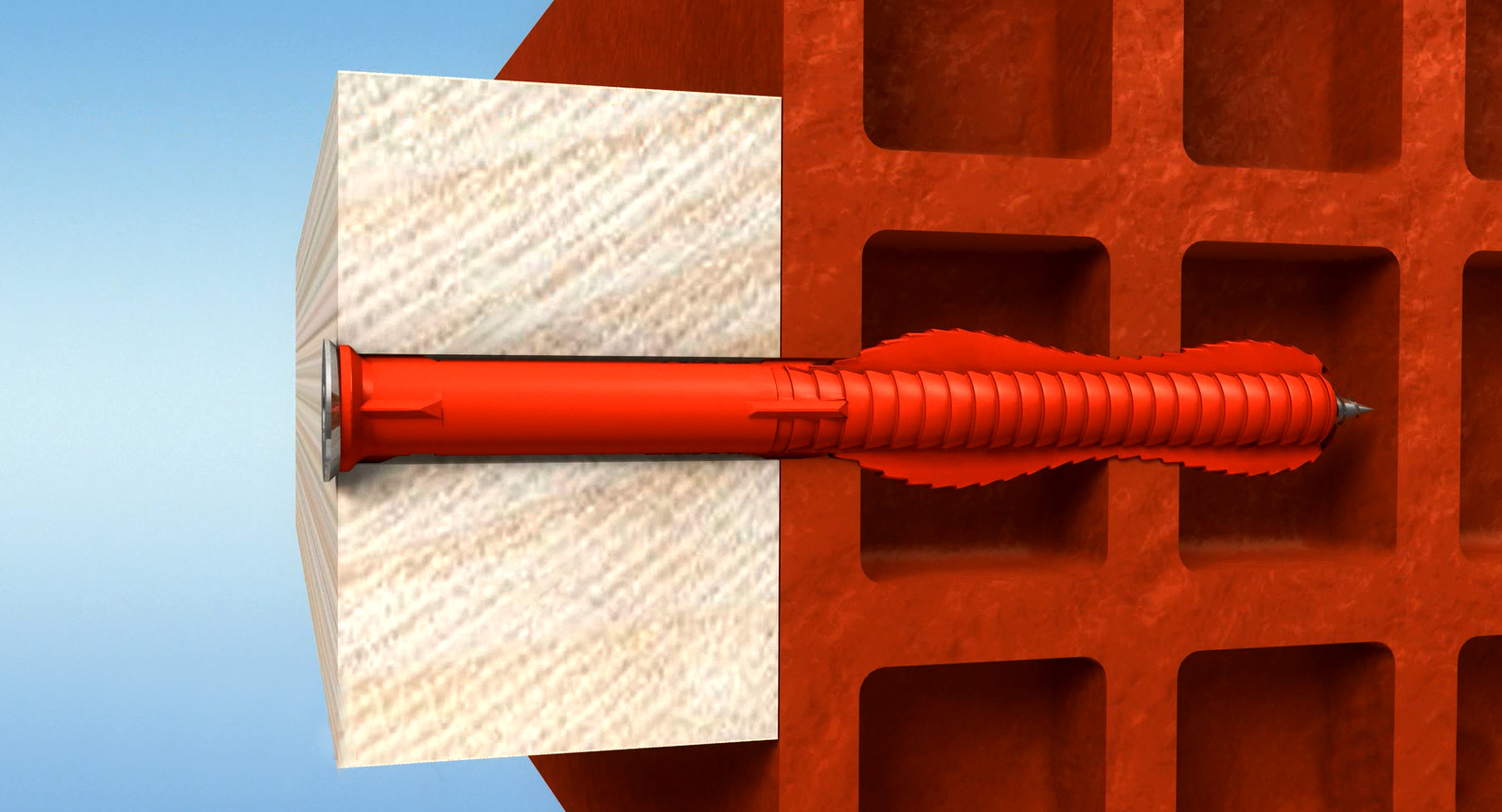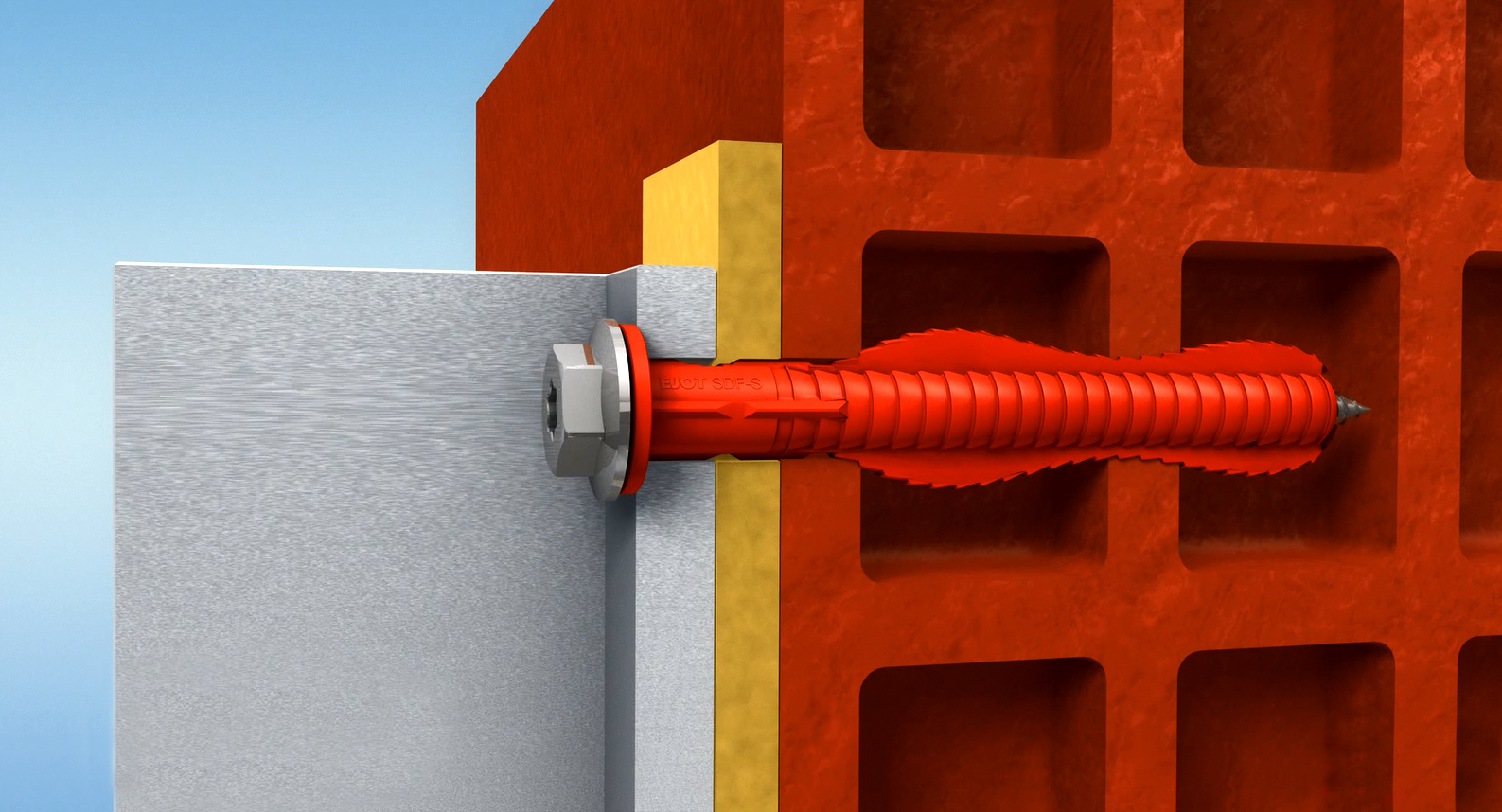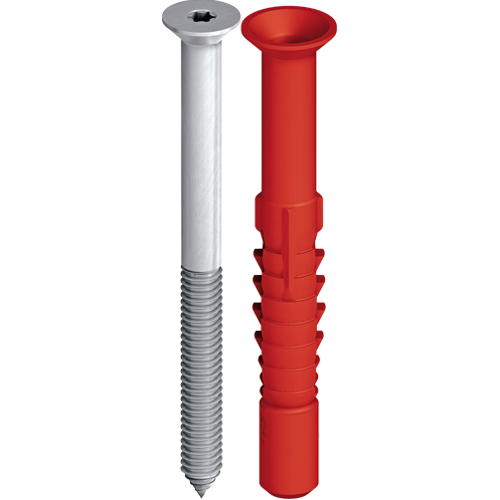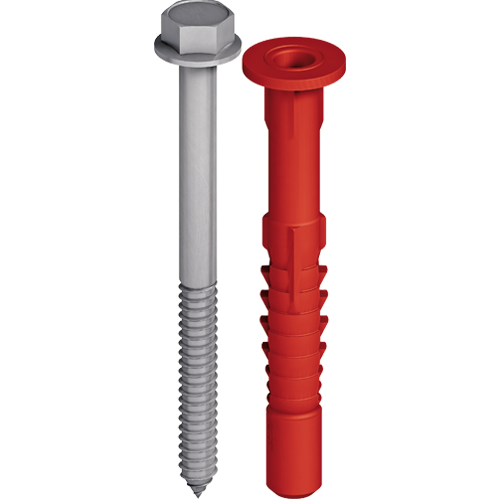The anchor primer
Facade anchors for timber and metal attachments
For the structural fastening of facade substructures, there are various types of facade anchors. Generally, the specifier decides which facade anchors are to be used. Nevertheless, the processing technician should also be aware of the differences between facade anchors, as the substructure is the static link between the supporting exterior wall and the facade cladding. Therefore, the use of a false facade anchor – be it by accident or ignorance – must be avoided in any case.
Description and function
Facade anchors are fastening elements approved by building authorities and must be installed by trained technicians. They consist of a plastic anchor sleeve and an exactly fitted anchor screw. Both components form a unit and must not be mixed with other types of facade anchors. Upon installation, the screw presses the anchor sleeve against the drill hole wall. The facade anchor is embedded in the substrate through expansion. EJOT facade anchors shall be used for multiple fastening of non-supporting systems.Attention: Push-through installation, no pre-positioned installation!
Facade anchors must imperatively be processed by push-through installation! This means that the anchor sleeve and the screw must be pushed through the attachment and afterwards fastened into the substrate. It must be avoided by all means that the anchor sleeve is inserted into the substrate and then the screw is fastened separately through the attachment into the sleeve. This would mean that the screw, whose length is exactly matched to the anchor sleeve, would now be too short to achieve a reliable embedment in the substrate.3 decision criteria for the appropriate facade anchor:
- Material of the attachment (timber or metal) à corresponding head geometry of the anchor
- Fastening thickness of the attachment à corresponding length and diameter of the anchor
- Substrate material à corresponding use category acc. to approval
Material of the attachment
The version with countersunk head is used for timber attachments and guarantees a flush fastening in the timber substrate. For metal attachments, anchor sleeves with collar flange are available. The collar flange serves as thermal separation between screw and attachment. Furthermore, it acts as a seal ring to prevent moisture penetration. The screw of the version with flange collar additionally features a flange head which guarantees the best possible load transmission. For EJOT facade anchors, you can see the version on the product name: S stands for countersunk head, KB stands for flange collar.Fastening thickness of the attachment
The fastening thickness contains the thickness of the attachment and the exterior plaster (non-supporting layer). Example: With a 100 mm-long anchor which is embedded 70 mm in the substrate, a fastening thickness of up to 30 mm can be achieved. If we assume that the plaster is about 20 mm thick, the attachment can be 10 mm thick. If there is no plaster, the attachment can thus be 30 mm thick.Every anchor has a limited load-carrying capacity. For particularly thick attachments, anchors with bigger screw diameters are suitable. Fastening thicknesses of up to 290 mm can be realised with the new EJOT facade anchor SDF-14A, for example. This 14 mm anchor features excellent load-carrying capacities and a characteristic bending moment of more than 60 Nm.




